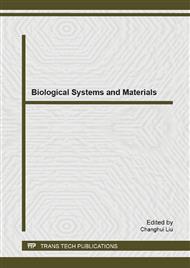p.3
p.8
p.14
p.20
p.26
p.33
p.38
p.47
The Construction and Validation of a Finite Element Human Head Model for Skull Fracture
Abstract:
In this paper, a finite element model of human head was established based on CT scanning on a 40-year-old and 50 percentile Chinese male volunteer, and the model was verified with the experiment conducted by Verschueren and skull fracture was investigated during the collision. The frontal of head was impacted with different velocities during the impact tests. A break-deletion element process was represented to simulate the pathological phenomena of skull fracture.The results showed that the simulation results and experimental results were in a good consistency on both mechanics and pathology.
Info:
Periodical:
Pages:
20-25
Citation:
Online since:
May 2014
Authors:
Price:
Сopyright:
© 2014 Trans Tech Publications Ltd. All Rights Reserved
Share:
Citation:


